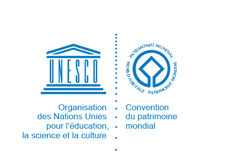Romanesque Cathedrals in Puglia
Ministry of Cultural Heritage and Activities
Region: Puglia - Provinces: Foggia, Bari, Lecce
Avertissement
Les Listes indicatives des États parties sont publiées par le Centre du patrimoine mondial sur son site Internet et/ou dans les documents de travail afin de garantir la transparence et un accès aux informations et de faciliter l'harmonisation des Listes indicatives au niveau régional et sur le plan thématique.
Le contenu de chaque Liste indicative relève de la responsabilité exclusive de l'État partie concerné. La publication des Listes indicatives ne saurait être interprétée comme exprimant une prise de position de la part du Comité du patrimoine mondial, du Centre du patrimoine mondial ou du Secrétariat de l'UNESCO concernant le statut juridique d'un pays, d'un territoire, d'une ville, d'une zone ou de leurs frontières.
Les noms des biens figurent dans la langue dans laquelle les États parties les ont soumis.
Description
Ever since ancient times, Puglia, thanks to this land's particular nature and geographical position, has been an essential link between continental Europe and the ancient civilizations that developed on the Eastern shores of the Mediterranean. Between the 11th and the 13th centuries, when this role was particularly significant, it produced great achievements that marked the history, culture and arts of the whole region but also of medieval Europe.
The land was under Byzantine rule as part of the vast Eastern Empire and already showed stratifications of past civilizations - Magna Graecia, Ancient Rome, Arab and Lombard. It was then conquered by the Normans and, during the first centuries of the second Millennium, was at the centre of the more important events, of subtle political strategies, thus witnessing the development of a dialogue with Byzantine territories and the Middle East as well as Western Europe's expansionist aims in those same territories, aims that were enthusiastically sustained by the Norman rulers in Southern Italy. In those years Puglia became the crossway of intense military campaigns for the Crusades and of an endless flow of pilgrims to and from the Holy Land, while two important shrines, Santuario dell'Arcangelo Michele on the Gargano and Santuario di San Nicola in Bari, became pilgrimage sites and outstanding features in the circuit of religious itineraries involving the Mediterranean and the whole of Europe. In line with all these occurrences, a thick network of international commercial maritime traffic developed in the harbours along Puglia's coastline.
This extraordinary situation caused an unprecedented enrichment of the cultural horizons, whose results are particularly noticeable in the figurative arts. The region already boasted a strong, lively tradition and it soon became the "laboratory" of an artistic style combining Eastern and Western suggestions, Romanesque stylistic elements with Byzantine and Arab inflections, which developed into a very original, incredibly modern, synthesis of languages whose importance is certainly of European level.
As of the second half of the 11th century, grandiose, rich shapes characterize Puglia's Romanesque churches, the more significant expression of that period's intense building activity. Strong Western and Eastern influences are quite evident, but there are also quite a number of original elements supporting the existence of a coherent regional culture. They show a wide variety in the choice of plans, volumes and construction techniques, associated to a refined taste for pure shapes, sumptuous, elegant materials and decorations, from the magnificent floor mosaics to a wealth of decorative sculptures.
The ancient basilica plan, such as the one chosen for the Cattedrale di Ottranto, is often blended with elements of Eastern origin, such as the striking cupolas at the centre of the nave, associated to semicircular vaults along the aisles; the result is a distribution of volumes to be found only in Puglia. The perfect example is the Cattedrale di San Corrado in Molfetta. Similarly, typically Romanesque elements, such as the internal loggias over the aisles and the strong cross vaults, are blended with highly original elements: a continuous eastern wall that connects the turn of the apses and shields them from view, the deep blind arcades along the sides and the bell towers of transalpine origin. The outstanding example of this typology is the Basilica di San Nicola di Bari, prototype of this area's other two celebrated monuments, the cathedrals of Bari and Bitonto.
The decoration of cornices, portals, windows and rose windows further distinguishes Puglia's Romanesque architecture. Classical and Byzantine patterns, arranged in striking compositions, appear transformed into geometrical shapes and Arabized, for instance in the portal and rose window of the Cattedrale di Troia. The region's sculpture develops also a particular repertoire of figures that tell us of exotic or imaginary animals always fighting against men who seem to succumb to a fantastic, terrible Nature. Particularly striking in these sculptures is the attention to detail, greater than elsewhere, and the mastery in conveying the vigour and movement of all these figures
Déclarations d’authenticité et/ou d’intégrité
Despite unavoidable modifications caused by time, the proposed properties fulfil the criteria of authenticity as regards materials, building techniques and structure.
Each one of them is protected by national (Decree n.42/2004, "Codice per i beni culturali e per il paesaggio") regional and municipal laws and strict management regulations ensuring their conservation.Comparaison avec d’autres biens similaires
Puglia's Romanesque style shows several of the elements that characterize this style in Europe, such as composite pilasters, loggias, blind arcades and portals sustained by marble lions, but it is distinguished by the proportions, the imposing vertical development, vaulted and not flat ceilings, semicircular cupolas of Byzantine origin and the wealth of decorations showing classical, Byzantine and Arab elements.
Furthermore, in Puglia, the hard plasticism, typical of the Northern Romanesque style, is softened to more ductile moulds and heralds the classical trend in sculpture that will develop under the rule of Frederick II.


 Italie
Italie